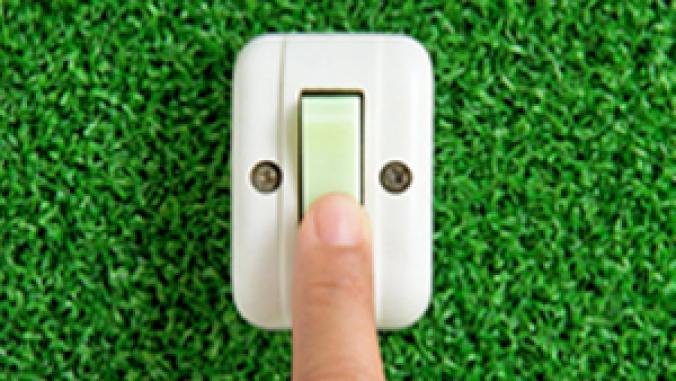How Starbucks Saves Millions a Year in Energy with LED Lighting
<p>When Starbucks converted the lighting in more than 7,000 of its stores from to LEDs developed for the company by GE, the company ended up saving roughly $4 million per year in energy costs, and proving that LEDs are ready for prime-time.</p>

Starbucks recently finished replacing nearly all of its incandescent and halogen lighting with LEDs during a two-year roll-out to over 7,000 company-owned stores, most in the United States and Canada, but with some in Europe and Asia. This is the largest deployment yet of LED technology in an application that is very sensitive to the quality of light; Starbucks' success proves that the new digital lighting is ready for mass install.
Jim Hanna, Director of Environmental Impact for Starbucks confirmed that the LED lighting program is on target to slash consumption by more than 80 percent compared to existing lighting. My back-of-the envelope calculations [see notes below] found that
• Each LED light bulb saves approximately $30 annually in energy costs and eliminates the equivalent CO2 as half a barrel of oil;
• Each 1,000 square foot store on average would save nearly $600 annually and eliminate the equivalent CO2 as 10 barrels of oil
To capture these impressive benefits, for both the bottom-line and the environment, it took more than replacing a light bulb. When Starbucks was examining which energy efficiency projects to deploy in its stores, lighting was an obvious choice, since retailers consume a large amount of energy on lighting to provide ambiance and to showcase products.
But Starbucks had already installed energy-efficient fluorescents in many areas of its stores. The remaining halogen and incandescent lights were in its beverage and sitting areas. The soft, warm light provided by incandescent bulbs was critical to creating an inviting experience. And halogens were used to highlight products. Fluorescent was a poor fit in these areas due to its inferior color rendition. Although CFLs are prevalent in offices, older and inefficient lighting technology is common in many retail and other high-end applications.
Starbucks investigated LED lights and appreciated the low energy use and the quality of light, but LED products on the market at the time required replacing both the light bulb and fixture driving costs up considerably.
Rather than wait for the price of technology to drop, Starbucks reached out to its partner, General Electric. Hanna said, "GE worked with us to develop a LED light bulb that provides similar output as incandescent but uses a fraction of the electricity. GE kept retrofit costs low by designing a bulb that could fit the track lighting and recessed cans that were already installed."
The roll-out after initial trials proceeded smoothly. It is too early to confirm the LED longevity, but Starbucks is confident in its approach. Hanna explained, "The GE partnership reduces the risk of new technology should issues surface." The Starbucks case study illustrates that emerging technology can provide significant savings and is worth the extra effort to make new technology work for your requirements.
Hanna agrees with the U.S. Department of Energy assessment that "LED usage will accelerate … since … no other lighting technology offers as much potential to save energy and enhance the quality of our building environments." Starbucks achieved a notable LED milestone, but that's one record that Starbucks is happy to see beaten. Will your facilities be the next LED winner?
Notes
I did some calculations after my discussions with Jim Hanna to estimate just how much money Starbucks is saving due to its LED retrofit. Here's what I found:
• A new LED bulb requires 7 to 10 watts, depending on light output. It replaces 50 to 60 watt bulbs, either incandescent or halogen.
• Common practice in retail is to leave some lighting on 24/7 for security and advertising. For this calculation it was assumed that one-third of lighting remains on 24/7, while the rest of the bulbs were lit during operating hours.
• According to the U.S. Energy Information Administration, the average cost of electricity in 2010 in the U.S. is 10 cents per kilowatt-hour.
• The savings estimate did not consider reduced maintenance which given the exceptionally long life of LED would increase savings and accelerate payback. • Carbon savings were estimated using the EPA's Clean Energy calculator.
• About 50 percent of the retail square footage is lit by LED, the other portion of the store is lit by CFL.
• 258,000 green bulbs were deployed in US and Canada to date (both LED and CFL bulbs)
• Company owned stores used 6.8 KWH / square foot / month on average in 2008 prior to LED deployment. [PDF]
• The new LED lights reduced total store energy consumption by 7 percent when compared to the baseline.
LED photo CC-licensed by Velo Steve.





